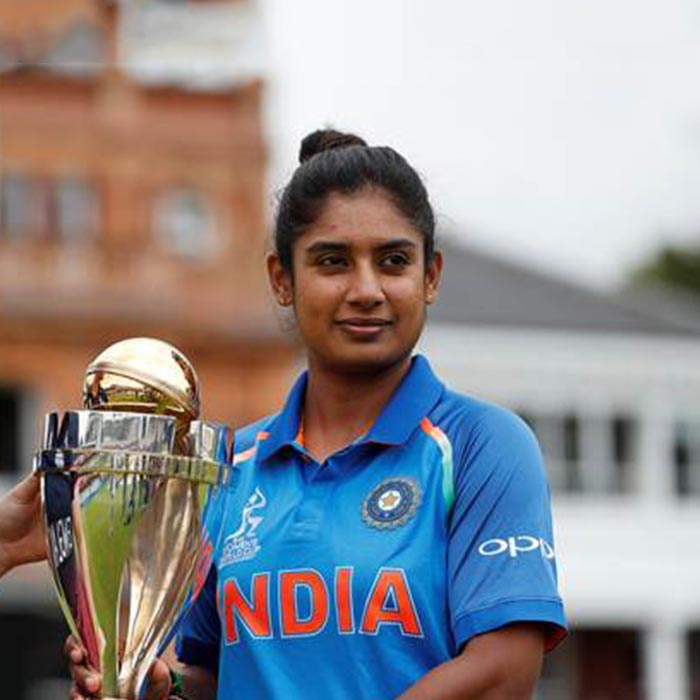An Ode to Mithali Raj: Not Out!
What turns a country’s love for a sport into sheer fanaticism?
What makes a sport, part of an entire nation’s identity?
How does a game become the most sustainable escape into a vicarious journey of hardship, struggle, joy, and ecstasy for millions of souls stuck in this endless maze that we call life?
It is when the underdog does the impossible that everything changes forever.
The British gave us the game in return for our soul for a couple of hundred years, but well I digress. But it is only because there is so much history when one starts to talk about cricket. Historically, the very nature of the game was divided into an upper and lower class. From the inception of cricket, it was always made for the elite. It was just convenient to have the ordinary folks around to do the dirty work and for PR.
So since the birth of cricket, there have always been stories of the ordinary folk from humble backgrounds rising up to do great things. However, historically, there has always been a pattern of underplaying and silencing of such stories from the elite of the game. The glitz and glamour were always only on one part of the game and in turn, one section of society.
Well, then the Queen called her troops back home and mayhem manifested in different ways. India had been playing cricket for decades by this point. The Madras cricket club which was set up in 1846 already had 4 leagues in club cricket in Chennai. Of course, these were just for men. But in 1940’s the love for this game was only growing. After decades of getting beat up by greater teams, Kapil Dev and his men did the impossible. They won the World Cup.
To explain the context of this event, it was the epitome of improbability. The Indian cricket team and an entire nation of Indians had never dreamt of having the audacity to do something that great. We all wanted to get by and make a good living with what we had.
The world cup brought in a change in ideology. A change in thought process. It inspired millions of men and women to dream and immerse themselves in the pursuit of it. It gave people purpose and people worshipped the men who gave them that. Hence began a never-ending love between my people and cricket. We rooted ourselves in the greater context of a nation, getting behind the team in every single situation, feeling the highs and the lows almost as if we were living through them. Because in a newly freed developing nation, we were.
A decade of men and women worshipping the game began and people started playing more. The game started bringing something that Indians valued most in their lives, money.
This also lead to the slow but steady development of women’s cricket in India. Though it was still miles behind when compared to men’s but there was the talent that one could simply not ignore. Anjum Chopra was the first modern hero the game had and she was phenomenal. The rebellion poured through her demeanour. What bowlers threw at her was nothing compared to what life had thrown at millions of girls and women in India. As she marched on, she became a symbol of inspiration for countless more to follow. And then came Mithali, who was a prodigy. 
A true reflection of society at the time lies in my little anecdote. I was at cricket practice in 2010 and the Indian team had just played a series. Mithali was outstanding, as she was for most of her glorious career. This was when I thought I fell in love with every cricketer I saw, but even then there was something special about her. When she batted, she always looked assured. She stood tall and made eye contact. But in those eyes, I could see age. Far ahead of how old she was. A sign of maturity and having fought tough battles to get where she was at that very moment. At practice, I kept mentioning bits of her innings like “oh the balance on the inside-out loft!”, “Her ability to find gaps is amazing!” and so on. A friend of mine was chiming in too but what he said next, I’ll never forget. “She looks no different than a batsman while batting”. I don’t remember how I reacted but I thought about that a lot. I grew up with a strong female influence in my life. The thought that a woman’s achievement or skill must be compared to a man to be worthy of a compliment was absurd to me. Mithali fought all these battles when she was on the pitch. The fact that she always gave herself time to do it in the middle shows that she never fled from a battle. Her dominance on the field inspired millions to take up the sport and started the ideology change in the nation that women can play this game. Considering the country and societal conditions, she did the impossible. She inspired a generation of little girls and boys.
Her influence can never be fully measured but it can be captured in a nutshell. A couple of decades ago, most women would say that their favourite cricketer was Sachin or Kapil or any other man. Today that has changed to Mithali, Harman, and Smriti.
For that accomplishment, Mithali, you will always be not out.
Thank you, Queen.
____________
About the Author:
Rakshak Bharath, a 24-year-old consulting professional from Hyderabad. His interests range from sports to music to global politics. He often finds himself passionate about so many things that they all end up converging. This article was originally published here and has been edited.

Leave a Reply